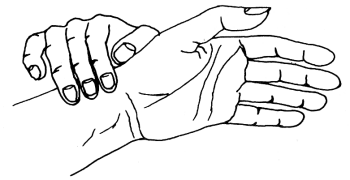Pulse
Heart contracts and relaxes. Heart rate indicates contractions below a minute. It is evident that characteristics of each individual’s heart rate varies and reveals how his/her body reacts to load and to what extent his/her heart rate changes. Pulse rate is affected by many things. Regular heart rate means healthiness. Therefore for measuring individuals’ health primarily it is our heart that is used for gaining data. Heartbeat is normal if it is rhythmical and at rest and it shows low values: BPM (best Per Minute).
Our pulse
It changes with age
Females’ and males’ pulse rate varies
It changes depending on our fitness and condition
It changes because of diseases, the moment when it is monitored, state of mind, temperature, dehydration, posture, genetics and altitude.
Pulse measurement
Our pulse is the number of times our heart beats per minute. This can be measured easily as there are several pulse palpation sites in our body, for example, on one of the writs, head, behind the knee and temple area. Groin artery and artery in legs are sites where measurement can be done. There is arterial but no capillaries pulsation. Wrist is considered to be the best site as vessel is located near the skin.
Pulse measurement: the number of heart beats per minute is measured on neck and on one of the wrists.
Counting our pulse rate is a way to find out how fast our heart beats.
- By touching. Pulse can be checked on the inside of the wrist, bellow the thumb. Two fingers of the other hand should be gently placed on this artery then beats are counted for a minute. Rate between 60 and 100 shows the normal rate of a resting heart rate.

Measuring can be done just
- By listening to the rate of heart
- By ECG
- With a blood pressure monitor and a pulse meter watch